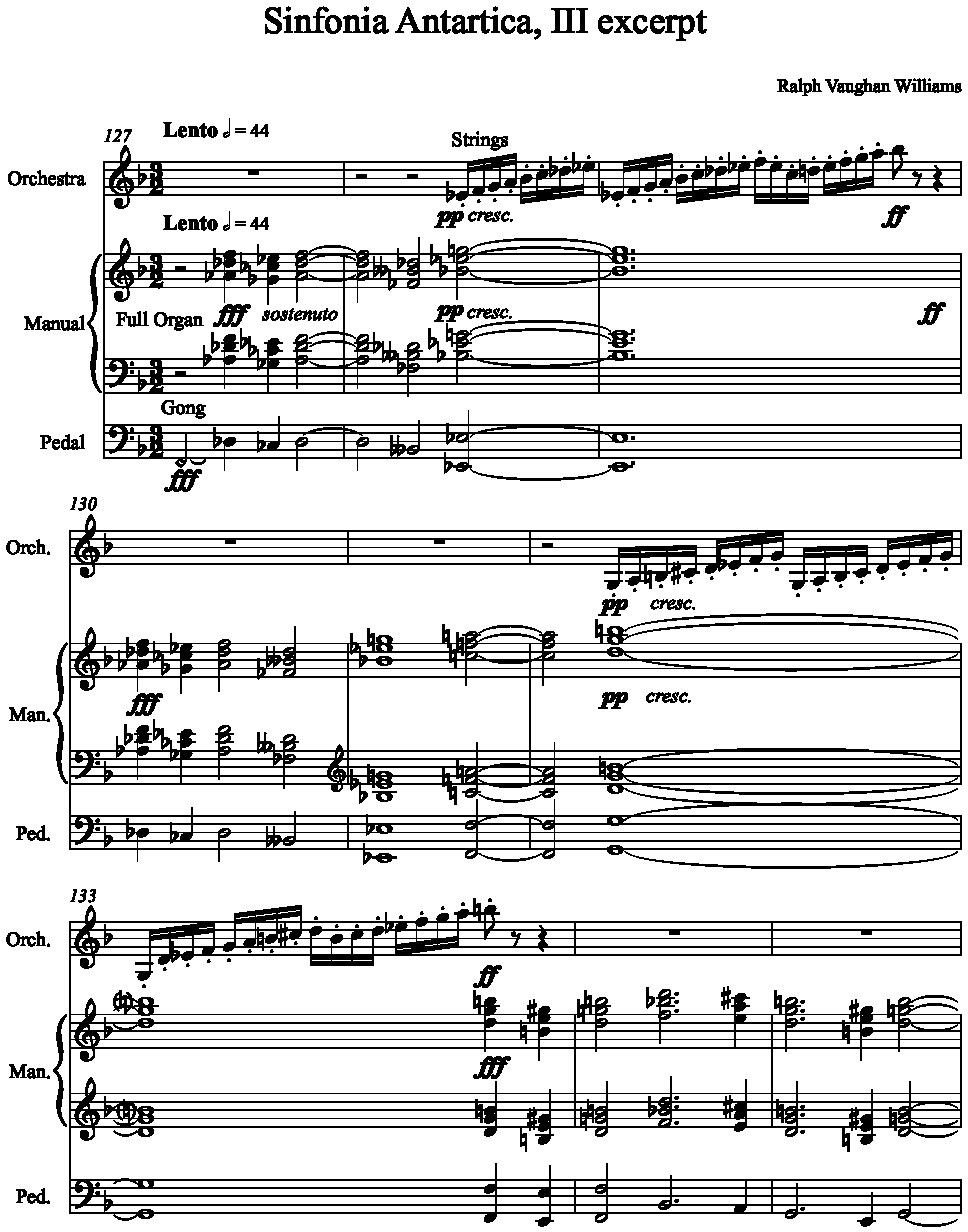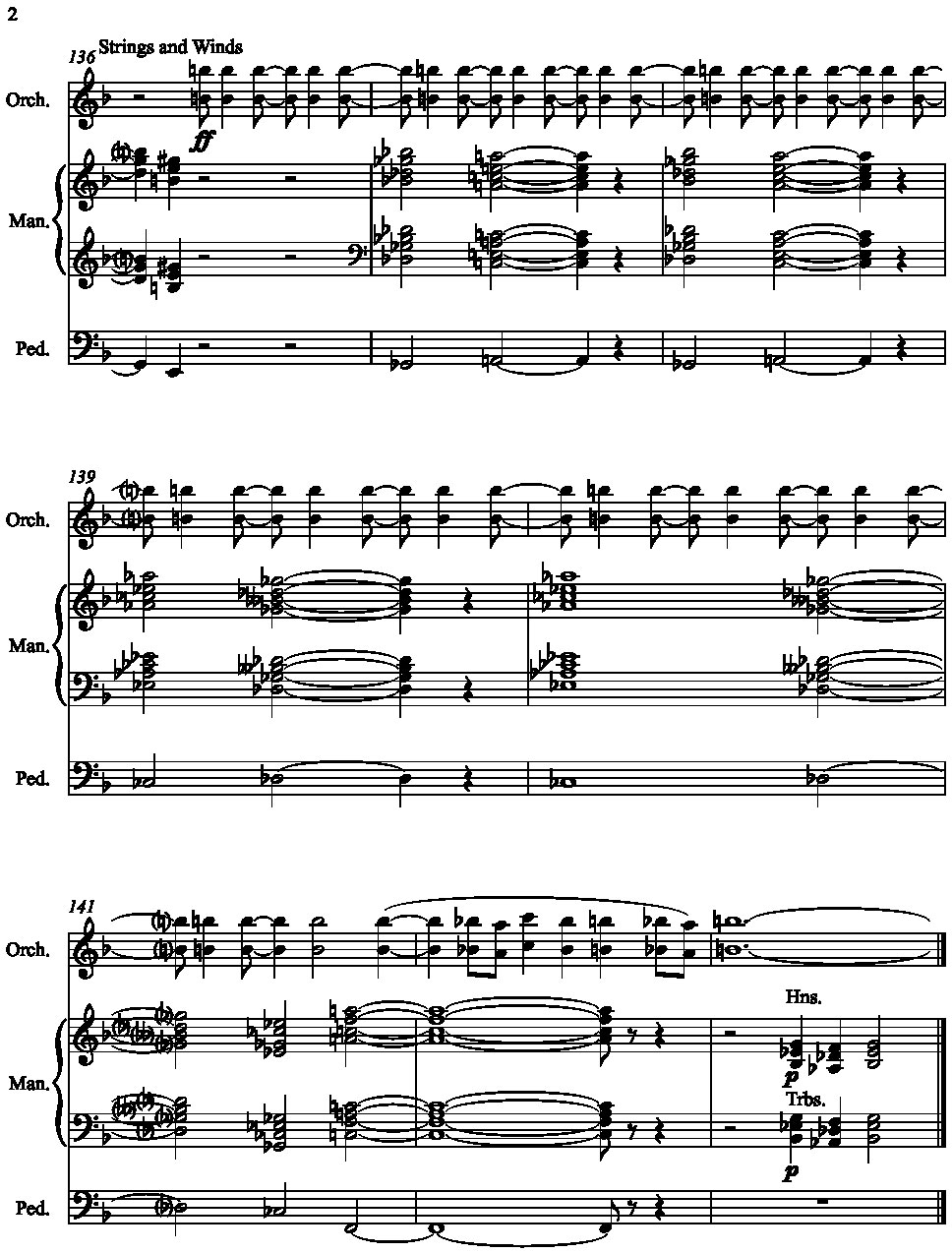
Sinfonia Antartica
Organ and Orchestra
 |
Sinfonia Antartica |
Organ and Orchestra |
The combination of a full pipe organ and full symphony orchestra is a powerful and special sound. It is the equivalent of doubling the impact of the organ or the orchestra when you hear it in concert. It doesn’t occur that often, and requires a unique orchestration. A number of these rare passages will be discussed in this blog. In the decade of the 1940s, the English composer Ralph Vaughan Williams was commissioned to write a number of film scores. One of these projects was the soundtrack to the film Scott of the Antarctic, composed in 1947. The film documented the ill-fated expedition by British explorer Robert Scott to the South Pole. As with all of his film scores, Vaughan Williams thought about using the music to create a symphonic work for concert performances. As he described in a letter to his publisher, “in the concert room we are pretty sure we will not have half the music cut out and the rest inaudible.” Work on the symphonic version, subtitled Symphony No. 7, was not completed until 1952. Sinfonia Antartica was first performed in January of 1953. Unlike his other symphonies, this work is programmatic in nature due to its connection to the film about Robert Scott. The symphony is organized into five movements, each preceded by a narrated epigraph, from English poets and in the case of the fifth movement, a quote from Scott’s final journal entry. It should also be noted that the title is not misspelled, but rather the Italian language title that Vaughan Williams gave it. Its number (seven) is listed in parentheses after the title. The passage in the work that uses organ and orchestra is in the third movement titled “Landscape”, depicting the massive glaciers and frozen solid ice flows of the rugged terrain. The epigraph for this movement is from the “Hymn Before Sun-rise”, by the Romantic era English poet Samuel Taylor Coleridge:
The passage is approached by a two part contrapuntal line in the orchestra that gradually builds to a large tam-tam crash and the entrance of the full organ. Turn on the player to follow the score excerpt: |
 |
 |
In the first two phrases of the excerpt above, the wind section enters on the last chord of each phrase, doubling the organ, while the string section plays the sixteenth note figures shown in the first staff. In the recording, the organ follows the same dynamic as the orchestra on those two chord, although the score doesn’t show those dynamics other than fff in the organ part. I put the pp cresc. dynamic in the organ as it is played. This does make a lot more sense in the performance, enabling you to hear the strings and also a piano part not shown. Vaughan Williams uses the third of each chord in the top voice of the organ part, which provides a slight mellowing effect to the huge block chords in the passage. Then, starting in measure 136 after the organ completes its third phrase solo, all the treble capable instruments of the orchestra play the B natural pedal point, an interesting Lydian touch in the written key of F major. There are some great dissonances created between that pedal point and the chords of the organ part: Gb major and A minor in root position twice, then Ab minor 6 to Gb minor 6/4, also twice, and ending on Cb major to F major. At that point (m. 141-2) the B pedal point becomes a chromatic melodic line that eventually resolves in the orchestra. What you see in the excerpt is the entire organ part. It’s brief, but has quite a dynamic presence. Appropriately for Sinfonia Antartica it sends chills up your spine when you hear it, especially at full volume in a large auditorium. |